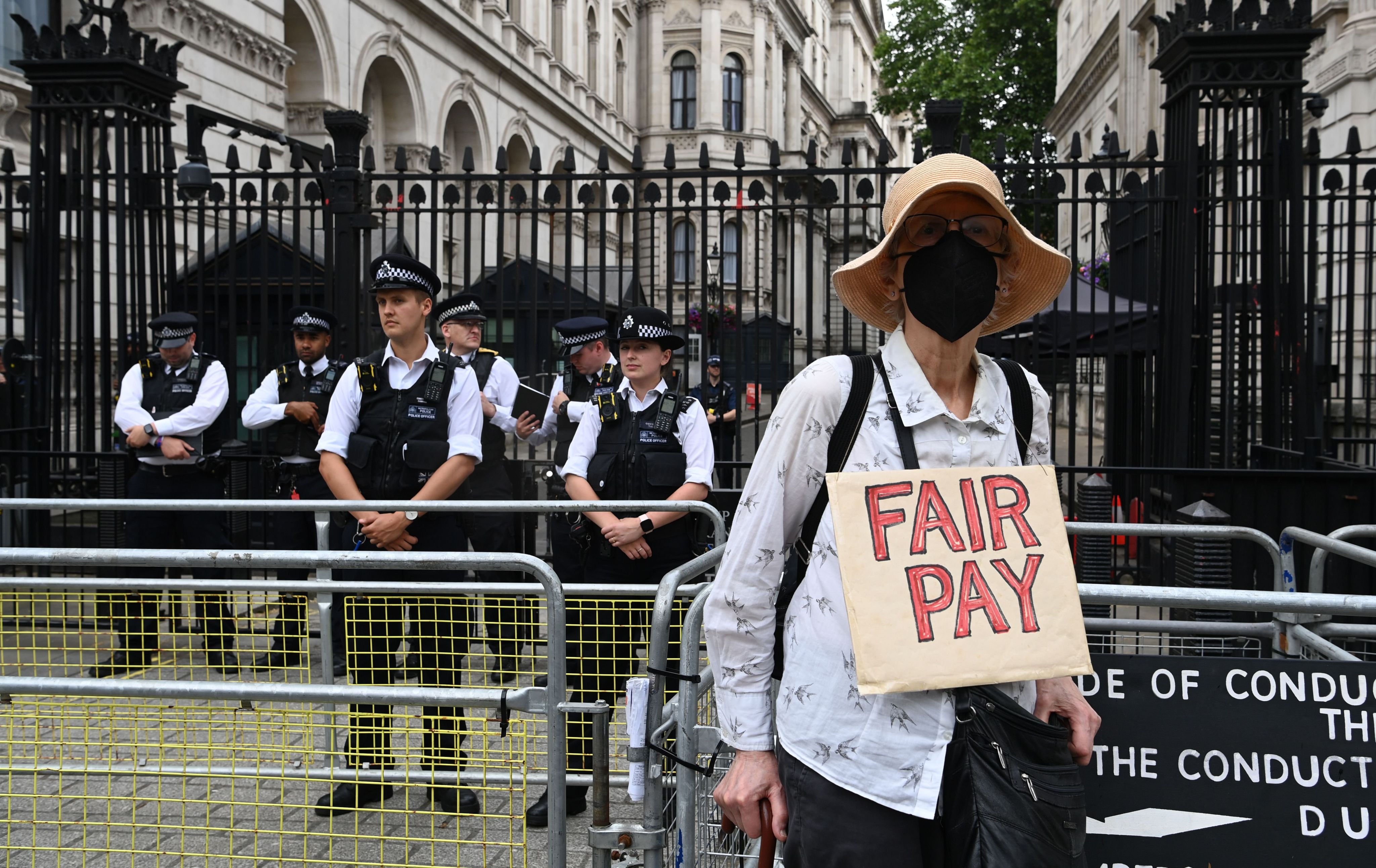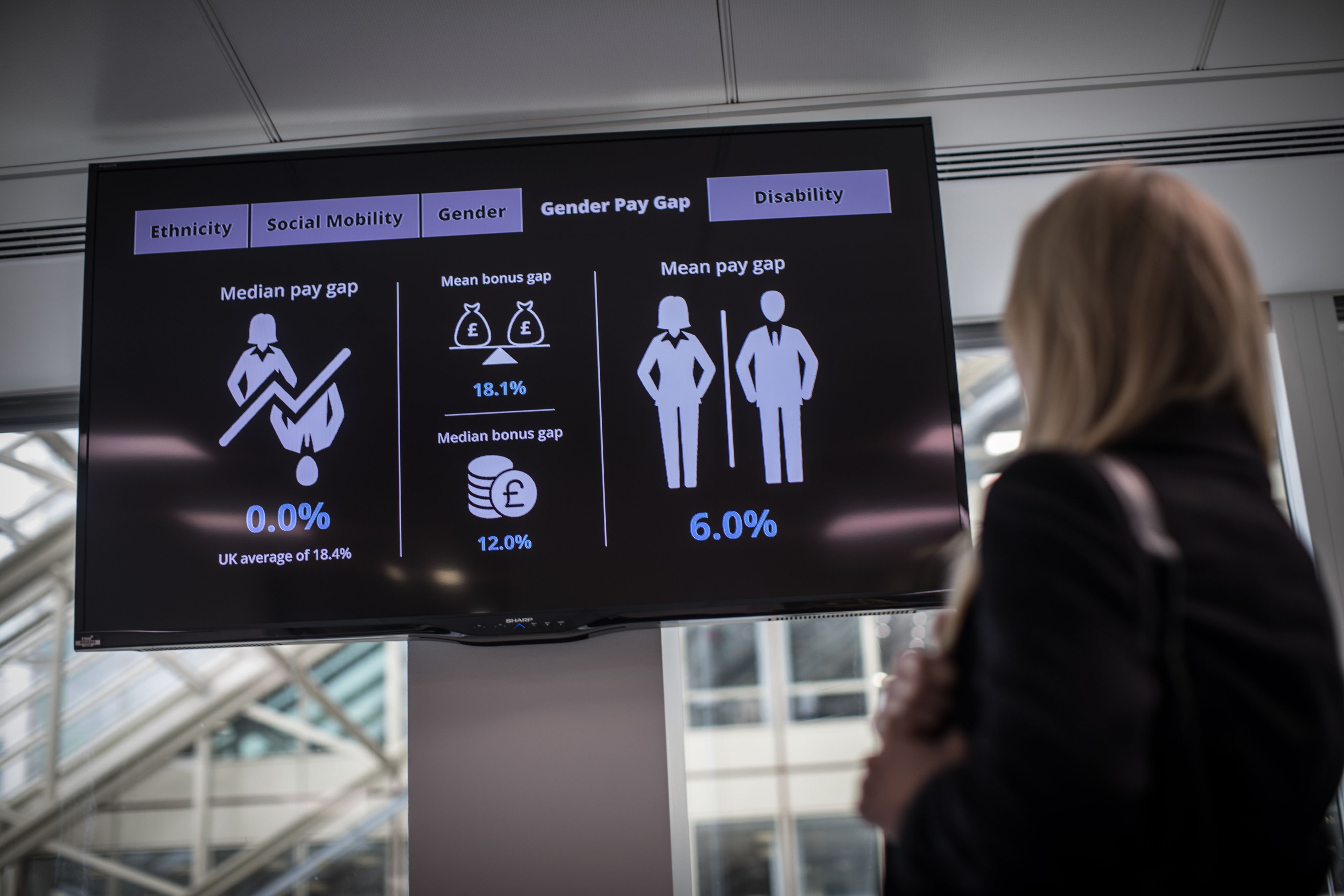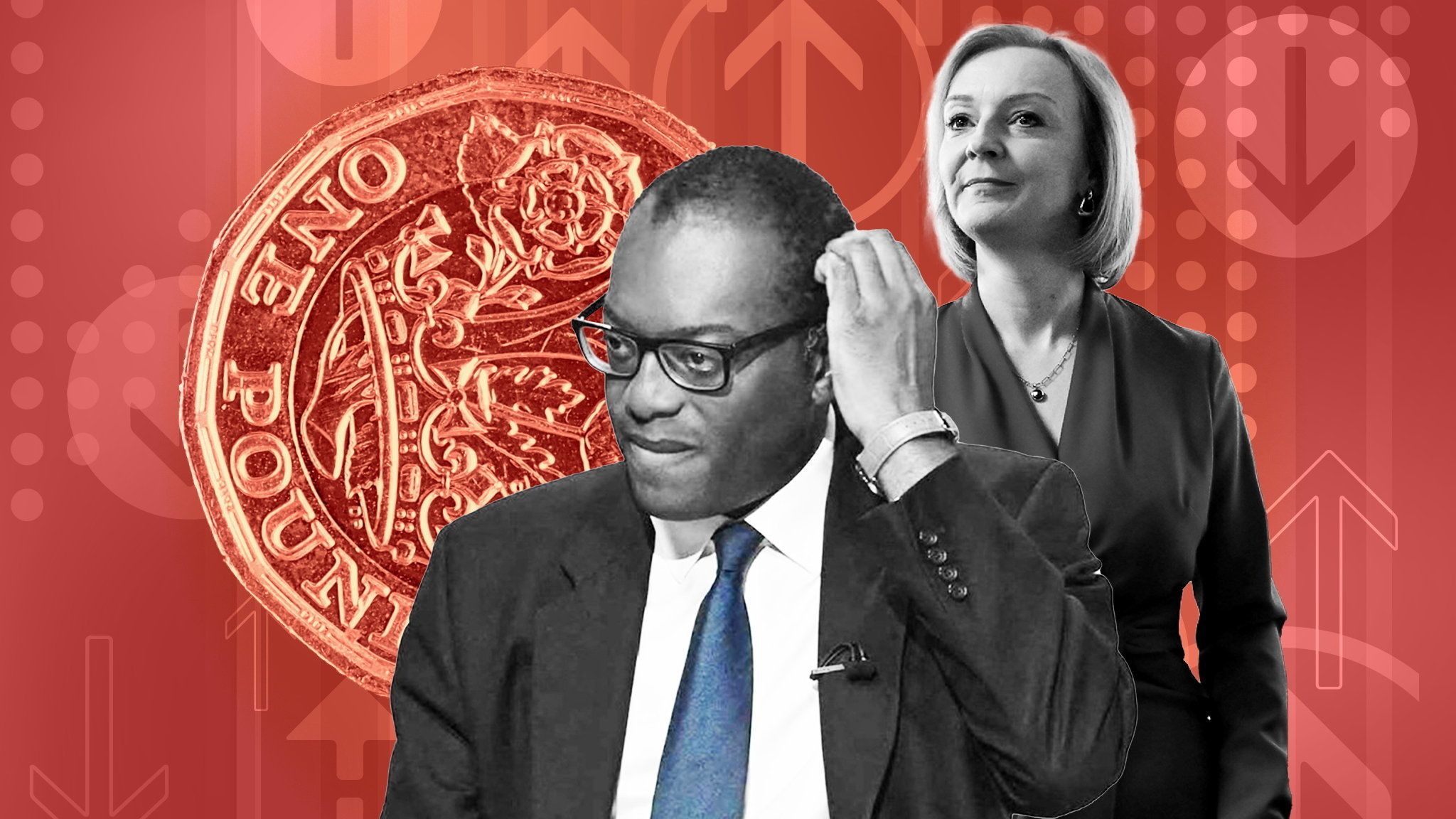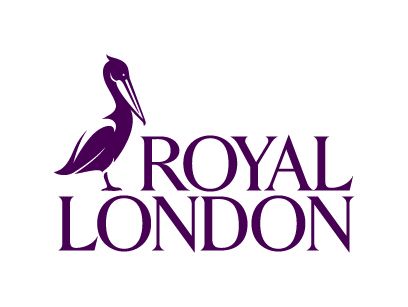Guide to workplace pensions and the cost of living

Why workplace pensions are a priority during cost of living crisis
Despite any fears of the pandemic impacting pension contributions, last year 20mn eligible employees participated in a workplace pension, equivalent to a majority of 88 per cent, according to government figures.
Additionally, the ‘active decision stopping saving rate’ – the proportion of workplace pension savers who made an active decision to stop saving – remained at 0.6 per cent in the financial year 2021-22, statistics from the Department for Work and Pensions show.
But with focus having shifted from the pandemic to inflation, concerns are being raised about how the cost of living crisis could impact pension contributions.
“Given the severity of the rising cost of living, it may be appropriate for some people to pause or reduce their pension contributions,” says Jamie Jenkins, director of policy and communications at Royal London.
“However, in doing so, they will likely be giving up tax relief, investment returns and possibly contributions from their employer. As such, the focus should be on putting in place a plan to resume contributions when they can.”
If the cost of living crisis is really biting, then saving into your pension is not more important than feeding your family
Almost one in five savers (17 per cent) with a workplace or private pension have reduced, frozen or stopped their pension payments in the past six months as a result of the cost of living crisis, an August survey from NatWest Premier found.
Saltus partner Mike Stimpson agrees on the importance of being realistic. “If the cost of living crisis is really biting, then saving into your pension is not more important than feeding your family or paying your energy bills.
“If you have to stop, the key thing is to resume your savings as soon as you can. But it is much better to reduce the amount you contribute so that you stay in the habit of regular saving.”
The value of employer contributions
When it comes to workplace pensions in particular, George Davey, a financial planner at Charles Stanley, notes how they generally require employees to make a minimum contribution to qualify for the corresponding employer’s contribution.
“These contributions are paid into the pension pre-tax and then grow in a tax-free environment until they are drawn. Therefore, if you as an employee were to cease contributing, you would not only be losing out on the tax benefits of your portion of the pension contribution, but also that of your employer’s contribution.
“It is therefore advisable that, where possible, any minimum contribution limits are met; if they are not, you essentially give up additional ‘free’ money from your employer, which is not otherwise paid out.”
|
The cost of cutting back pension contributions |
||
|---|---|---|
|
Alex has a £35,000 salary and a 5 per cent matched scheme, where the employer contributes 5 per cent, as long as the employee also contributes at least 5 per cent. The usual total monthly pension contribution would be £291.66 including employee contributions, employer contributions and tax relief. Alex reduces their contribution by the full 5 per cent and consequently loses their employer’s contribution. They would be reducing their employee contribution by £145.83 but would not see all of that money added to their net pay. The loss of tax relief means they would only add £116.66 to their monthly salary. Moreover, losing the employer’s contributions means Alex’s total monthly pension contribution falls to zero, meaning a total loss to their overall wealth of £175 every month. This does not take into account any investment growth. |
||
|
Source: Broadstone |
With auto-enrolment workplace pension schemes, stopping contributions may also mean the employee is opting out, and they may not be able to rejoin until the next annual review, warns Zoe Bailey, financial planning director at Evelyn Partners.
As long as you have a sufficient emergency cash fund, then you should cease other savings before reducing or stopping workplace pension contributions
Before altering any workplace pension contributions, she suggests an overall financial health check, including a review of:
- All income sources;
- Cash savings;
- Basic and discretionary spending, and how much they may increase over the next year;
- Utility bills, and whether savings can be made by switching providers; and
- Insurance policies, such as whether there are more suitable and less expensive options available.
“Only once you have completed this exercise can you see if there are alternative monthly outgoings that could be paused, stopped or reduced instead. You may have some subscriptions or memberships that are not essential right now, or that you have forgotten you were paying for,” says Bailey.
“As long as you have a sufficient emergency cash fund, of at least six to 12 months’ basic expenditure, then you should cease other savings into cash, ISAs or general investment accounts before pausing, reducing or stopping workplace pension contributions.”
Resuming contributions
If someone has paused saving into their pension due to cost of living pressures, they should generally look to resume contributions as soon as they can, says Stimpson at Saltus.
“But every situation is different... while it may be the right decision for a client to stop contributing, as their adviser, we should have good visibility [of] when our clients are able to save again. A cash flow model can be very useful to help illustrate this.”
Naturally, advisers should offer the option of more regular reviews
Andrew Megson, executive chairman of My Pension Expert, agrees on this case-by-case approach. “Check in regularly and understand their full financial situation. Make sure a plan is in place, even if that is as simple as setting a timeline for reviewing the situation again.
"Naturally, advisers should offer the option of more regular reviews so that should the situation change, small adjustments can be made."
For savers who pause contributions, Jenkins at Royal London says the time they resume payments depends on when the cost of living crisis begins to ease, and the extent to which government measures to support people prove effective.
“The important thing is to keep it under review and not lose sight of what was being paid previously. If the additional income is absorbed in other non-essential spending, then it may prove harder to restart pension contributions in future,” he adds.
Rachel Meadows, head of pensions and savings at consultancy Broadstone, likewise says that a risk of reducing contributions is that there is often no ‘good’ month or time to increase savings.
Diverting some of their pay increase before they become accustomed to the extra income can be a really good time to resume contributions
But she adds that when it comes to workplace pension savers in particular, there are some obvious moments when messaging may be most effective, such as before a new tax year and at the time of a pay rise.
“In advance of the new tax year in April, changing thresholds and allowances often allow a little more affordability in terms of take-home pay. That can mean that increasing pension contributions at the same time softens the blow of increased savings.
“At the point where pay increases are communicated, allowing staff to divert some of their pay increase before they become accustomed to the extra income can be a really good time to resume contributions, without feeling any pain.
“For savers that have maintained pension contributions but aren’t on track for their desired standard of living in retirement, this time of year is also the perfect time to step up contribution levels.”



Only 34% of people with a workplace DC pension who are aware of salary sacrifice actually use it. (FT Money)
Only 34% of people with a workplace DC pension who are aware of salary sacrifice actually use it. (FT Money)

The main benefit of a salary exchange arrangement is that both employees and employers pay less NICs. (FT Money)
The main benefit of a salary exchange arrangement is that both employees and employers pay less NICs. (FT Money)
Is 2022 the ultimate year for salary exchange?
Salary exchange, also known as salary sacrifice, is a tax-efficient way for employees to pay into their workplace pensions, but research shows that savers are potentially under-utilising the arrangement.
Only a third of people (34 per cent) with a workplace defined contribution pension who are aware of salary sacrifice actually use it, according to research published in May from Cushon.
“Most traditional pension schemes make the contribution after the employee has paid tax and national insurance,” notes Ian Bird, business development director at Secondsight, an employee benefits adviser.
“And when the employee makes their payment to the pension company, they’ll get the tax relief back added into their pension fund, but they can’t reclaim the NI.”
How salary exchange works
The main benefit of a salary exchange arrangement – where employees agree to exchange part of their gross salary or bonus for a pension contribution – is that both employees and employers pay less NICs, and employees pay less income tax, says Craig Muir, senior intermediary development and technical manager at Royal London.
Employers can decide, or give their employees the decision, to add savings to their pension contribution or their take-home pay, adds Muir:
- Using any tax and NIC savings to increase pension contributions and keep take-home pay the same would benefit employees who are concerned about maintaining their contributions during the cost of living crisis.
- Using any tax and NIC savings to increase their take-home pay, while keeping the pension contributions the same, can help those who are looking for additional income during periods of high.
|
Before salary exchange |
After salary exchange |
||
|
All savings invested |
No savings reinvested |
||
|
Salary |
£27,000 |
£25,382 |
£25,650 |
|
EMPLOYEE |
|||
|
Pension contribution |
£1,350 |
£0 |
£0 |
|
Income tax payment |
£2,886 |
£2,562 |
£2,616 |
|
NICs |
£1,911 |
£1,697 |
£1,733 |
|
EMPLOYER |
|||
|
Pension contribution |
£810 |
£2,671 |
£2,160 |
|
NICs |
£2,693 |
£2,450 |
£2,490 |
|
OUTCOME |
|||
|
Employee take-home pay |
£21,122 |
£21,122 |
£21,300 |
|
Total pension contributions |
£2,160 |
£2,671 |
£2,160 |
|
Cost to employer (including salary) |
£30,503 |
£30,503 |
£30,300 |
|
Based on automatic enrolment contribution rates of 3% employer and 5% employee. Source: Royal London |
|||
What also makes salary exchange particularly relevant this tax year is the health and social care levy, which increased NI contributions by 1.25 percentage points for some taxpayers, although this was being repealed in the "mini" Budget last month.
“Salary sacrifice for any type of benefit should provide employees NIC savings at either 13.25 per cent or 3.25 per cent,” says Sean McSweeney, employee benefits team director at Mattioli Woods.
How much is saved depends on whether the ‘sacrificed’ income is below or above the upper earnings limit of £967 per week, at which employees pay a lower rate above this point.
“[These rates are] temporary for the 2022-23 tax year and should return to 12 per cent and 2 per cent from 2023-24 when the health and social care levy is due to be charged separately,” McSweeney adds.
‘Sacrificing’ salary during cost of living crisis
Amid high levels of inflation, businesses will be considering ways in which they can reduce outgoings and maximise profits, says Mintago chief executive Chieu Cao.
“Meanwhile, their employees will be trying to stretch their pay packet as far as they can. In both instances, salary sacrifice pension arrangements can be extremely beneficial,” Cao adds.
In some cases, the savings made on NI can act as an additional budget for employers that want to do more to help staff during the cost of living crisis, says Rachel Meadows, head of pensions and savings at consultancy Broadstone.
“They can divert their saving into employee pension plans as an extra contribution, use the savings to fund other employee benefits… or even just to help fund additional pay top ups.”
Meadows also says that salary exchange can be particularly beneficial for higher rate taxpayers with taxable income between £50,271 and £150,000. “They will receive full higher rate relief at source, rather than having to make reclaims at the end of the tax year.
“Employees that utilise salary sacrifice can also navigate tax thresholds and improve their eligibility for some benefits, like child benefit.”
Downsides to consider
Despite the benefits of salary exchange, there are also potential drawbacks to take into account. McSweeney at Mattioli Woods lists the following:
- Employees cannot utilise salary sacrifice if, in any pay period, it takes them below the national living wage (£9.50 per hour) or minimum wage (between £4.81 and £9.18, depending on the worker’s age and whether they are an apprentice).
- Using salary exchange can increase the cost of employer pension contributions during maternity/paternity leave.
- Salary sacrifice is not useful to individuals with income below £12,570, the limit below which no income tax or NI is paid – relief at source provides a tax credit to non-taxpayers, which is not provided under salary sacrifice.
- Part-time employees could potentially lose out on some state benefits if their salary goes below the relevant thresholds. For example, salary exchange arrangements can affect an employee’s entitlement to earnings-related benefits, such as maternity allowance and additional state pension. The amount they receive may be less than the full standard rate, or they may lose the entitlement altogether.
Will the cost of living crisis exacerbate the gender pensions gap?
The gender pensions gap is often attributed to factors such as the gender pay gap, the tendency for women to take time out of work for caring responsibilities, and the consequence this can have on future earnings potential.
But there are concerns the cost of living crisis could exacerbate the gender pensions gap.
“Pay disparity, the ‘motherhood penalty’, a reduction in working hours due to childcare costs, even taking time from work to care for ageing parents – all of these can have a significant impact on pension loss over the years,” says Sarah Roughsedge, founder of Eva Wealth Management for Women.
“It is a real concern that the cost of living crisis will only add to this, creating scenarios where women feel they have to choose between putting money into their pensions and other necessary items.”
Stopping saving a greater risk to women
Women also tend to have longer life expectancies and so any defined contribution funds need to last longer, notes Clare Moffat, head of the intermediary development and technical team at Royal London.
Pausing or reducing pension contributions, which is often a last resort, could cause a cost of living crisis in retirement, says Moffat, and any reduction now will make reliance on the state pension in the future even more pronounced for women compared to men.
Low earners are likely to be more tempted to opt out of pension saving, says Claire Trott, divisional director of retirement and holistic planning at St James’s Place. “Given the number of those working part time being women, this will surely mean that they are impacted greater.
“It is important to ensure that they can easily see what they would actually receive if they were to opt out to aid them in making the right decisions. The amount received after tax and NI isn’t likely to be in line with the savings that would be going into their pensions.”
Fighting to have some of the family income directed to her personal ownership is usually a hard won negotiation
Women’s Wealth founder Sam Secomb says her firm encourages families to fund pensions for the non-earning, primary carer.
“The money to fund this often comes from family income, earned by the partner who continues in a career as the primary earner. I do believe the carer’s contributions are more at risk of being reduced or suspended than the earner’s, because these [contributions] are usually linked to employment.
“Membership of an employer scheme enjoys employer contributions that would be sacrificed if the member abandoned their contributions. It would make sense in that scenario that if the family could not afford to maintain both contribution streams toward retirement provision, the carer’s would be the one to go.”
Secomb adds that “fighting” to have some of the family income directed to a woman’s personal ownership is usually a "hard won negotiation" that only partly compensates a woman for the financial sacrifice she has made. “If the contributions accumulating to her falter, it will have to be renegotiated to get them switched back on.”
Roughsedge at Eva Wealth likewise says that without guidance and accountability, the “natural” areas to reduce spending are future savings, where the impact of changes cannot immediately be seen or felt.
“Advisers are well placed to help individuals review their expenditure and forecast their future financial position, to help them visualise and understand the impact of their decision making on their retirement and make decisions from an informed position.”
The need to save for the long term is just the same in a cost of living crisis as any other time
Meanwhile Caroline Murphree, managing director of investing, retirement and savings at Moneybox, highlights measures that women can take to maximise pension savings, such as:
- Ensuring they are taking full advantage of their employers’ pension contribution-matching scheme, where affordable;
- Trying to maintain pension contributions, however small, if working part-time or not in employment;
- Increasing their pension contributions if they get a promotion or raise with a new job;
- Claiming child benefit to make sure they have a full NI record, even if they are not working while taking care of children;
- Ensuring the employer continues to make pension contributions on the employee’s behalf during maternity leave.
Francesca Smith, a financial planner for Jarrovian Wealth’s private office, likewise says that tax reliefs that come with pension contributions are a fundamental part of an overall financial strategy.
“By building your pension savings, you are increasing the 25 per cent tax-free cash you will be able to extract in the future,” Smith adds.
“It is also important to remember the impact that inflation has on eroding the true purchasing power of capital. Although we need to ensure there is enough capital available to meet your living costs, strong cash buffers in these environments are less attractive over the longer-term.
“By continuing to invest into your pension, you are building your longer-term savings and aiming to protect your capital from rising inflation.”
Another option that Trott suggests is an "all-asset approach" to retirement. “The need to save for the long term is just the same in a cost of living crisis as any other time. However, it is harder to start or increase savings that will be locked away and difficult to access should the worst happen.
“However, pensions aren’t the only options available; the all-asset approach to retirement can be a very strong argument at this point in time. Having access to increased liquidity in savings during this time with the plan to move to a pension at a later date, should the funds not be needed, could give some reassurance.”




BoE has warned the UK is heading for more than a year of recession under the weight of soaring inflation. (Hollie Adams/Bloomberg)
BoE has warned the UK is heading for more than a year of recession under the weight of soaring inflation. (Hollie Adams/Bloomberg)

"It is good to have up to a year’s worth of expenditure readily available as cash at any one time in retirement" - George Davey. (Bloomberg/FT montage)
"It is good to have up to a year’s worth of expenditure readily available as cash at any one time in retirement" - George Davey. (Bloomberg/FT montage)

Capitalising on any tax efficiencies available could help to balance meeting current increases in the cost of living and saving for retirement. (Charlie Bibby/Reuters)
Capitalising on any tax efficiencies available could help to balance meeting current increases in the cost of living and saving for retirement. (Charlie Bibby/Reuters)
How to prepare clients for retirement amid recession fears
With the UK projected to enter recession from October, according to the Bank of England, this may raise people’s concerns about employment prospects, job security, and pay freezes.
For those who are approaching retirement meanwhile, the current economic climate may require a careful balancing act between immediate financial demands and saving for their upcoming retirement.
“Should the UK enter recession, savers approaching retirement may be affected as retirement funds can take a hit during the resulting economic decline. Coupled with inflation that is predicted to hit as high as 18 per cent next year [according to Citigroup], recession can reduce the value of savings and investments,” says Andrew Megson, executive chairman of My Pension Expert.
“Already feeling the effects of rising costs of household bills, fuel, and everyday essentials, a drop in the value of their pension pots will mean retirees will not be able to stretch their retirement income as far as originally thought.”
While it may be tempting to try and boost a pension pot by investing in higher-growth investments in the run up to retirement, this is never a sensible strategy
Additionally, people approaching retirement are naturally more sensitive to market volatility, notes George Davey, a financial planner at Charles Stanley. “As you approach retirement – regardless of your attitude to risk – capacity for loss and time horizons typically reduce. This reduces the overall level of risk that can be taken, as such, portfolios should be set up appropriately.”
Saltus partner Mike Stimpson says it may be tempting to try and boost a pension pot by investing in higher growth investments in the run up to retirement, but adds that it is “never a sensible strategy”.
“If the investments fall in value, there may not be time for them to recover before you want to start taking money from your pot. Recessions happen reasonably regularly, and a good financial plan should be built to work through a financial cycle,” says Stimpson.
“Therefore, if a client’s situation hasn’t changed then there should be no need to change the amount they are contributing. The key is to be invested in a suitable risk profile and therefore not have too large a swing in the value of your savings as you approach retirement.”
Indeed, most workplace pensions have designed investment solutions to help manage through volatile markets with a long-term view, says Jamie Jenkins, director of policy and communications at Royal London.
“With all the challenges facing people just now, it wouldn’t be appropriate to suggest they direct more money to long-term savings,” he adds.
The importance of cash
Davey also highlights the importance of balancing pension contributions with the need to hold sufficient cash, as well as using Isa allowances. “I generally talk to clients about diversification, not only in terms of investments but also structures or tax wrappers such as pensions, Isas etc.
“The reason for this is that there is no guarantee that tax benefits or legislation will not change in the future, so it makes sense to be reasonably diversified here too.”
Managing cash levels is also important in the approach to retirement, says Davey. “Typically, it is good to have up to a year’s worth of expenditure readily available as cash at any one time in retirement; the reason being that this reduces sensitivity to market volatility in the short term.
“If a portfolio is set up correctly, while any significant market downturns will be concerning, they should not be a source of stress or discomfort, as a client should ideally know that there will not be an immediate impact on their quality of living.”
Maximising tax efficiencies
Meanwhile, capitalising on any tax efficiencies that are available could help with the balance between meeting the current increases in the cost of living and saving for retirement.
“While appreciating the difficulty for many in the current situation, it is always a good option to contribute as much as you can to your pension while tax relief is available to you,” says Mark Devlin, senior technical manager at M&G Wealth.
“Once retired, very few have relevant earnings to benefit significantly from this. For those approaching retirement it may well be one last bite of the tax relief ‘cherry’.”
For those who are about to retire, Zoe Bailey, financial planning director at Evelyn Partners, says this may be the last time they earn a salary and can therefore contribute more than £2,880 into a pension for tax relief.
“Consequently, clients may wish to use this last year [of] income, or excess cash in the bank, to make one final larger pension contribution, whether this be monthly or via a lump sum contribution.
“Some clients may receive early retirement redundancy packages, and we have been able to offer advice around reducing the income tax and NICs on these payments via a salary sacrifice method at source with the employer, redirecting some or all of their payment straight into their pension so that they have received it in full.”
For those earning more than £40,000 a year or who own a limited company in particular, Bailey also highlights a possible option to carry forward.
“They can make up for lost years and make a last, one-off, larger personal or salary sacrificed employer contribution into their pension policy.”
Maximising allowances
Generally, the most that can be saved in pension pots in a tax year, before tax has to be paid, is £40,000.
However, this figure can reduce to £4,000 if the money purchase annual allowance or tapered annual allowance applies.
Meanwhile, non-taxpayers and those earning under £3,600 a year can contribute up to £2,880 a year, which is topped up to £3,600 with tax relief.
Carry forward allows savers to use any annual allowance that might not have been used during the three previous tax years, if applicable.
Chloe Cheung is a senior features writer at FTAdviser


